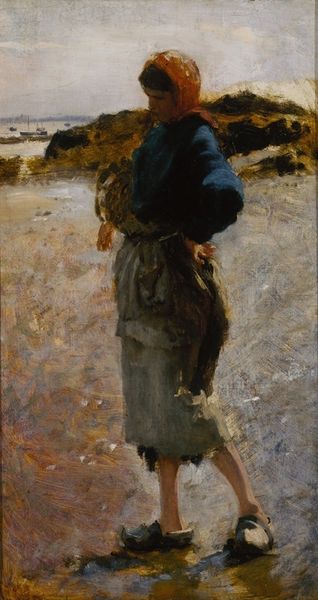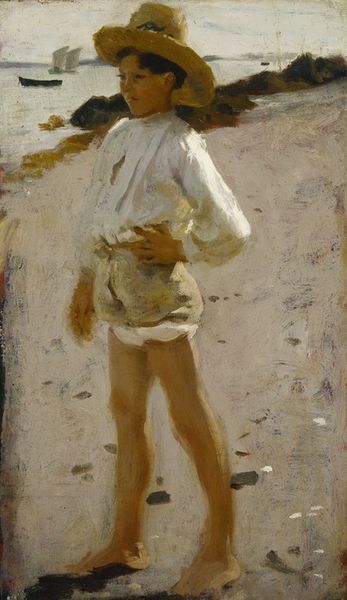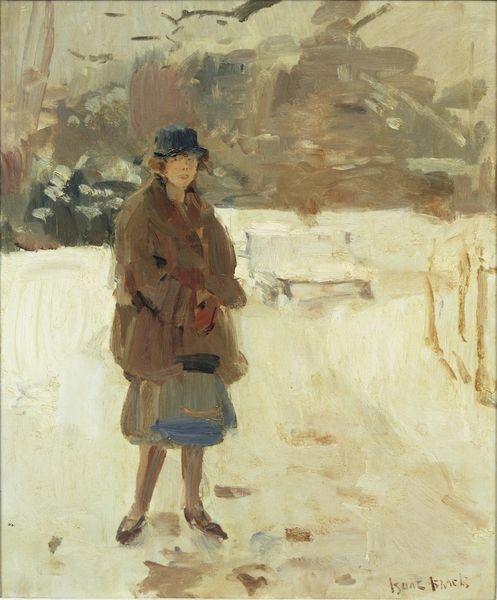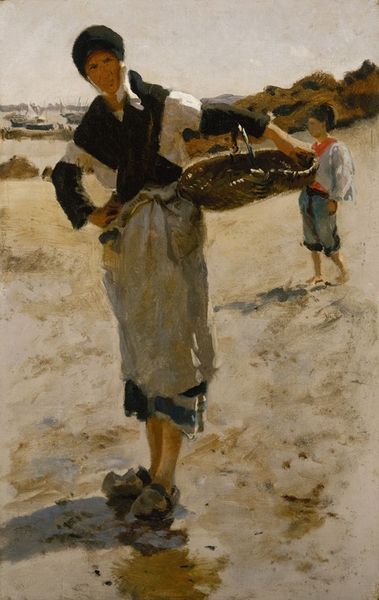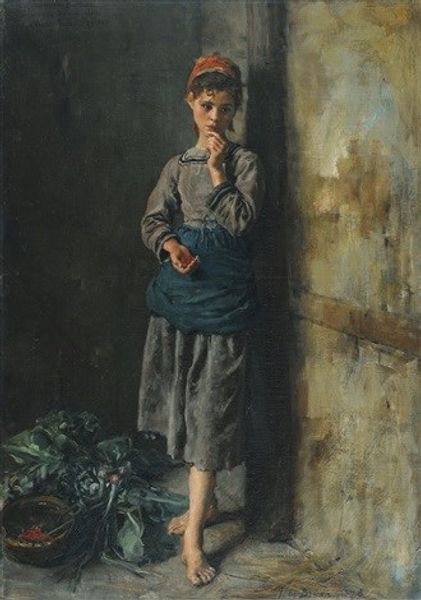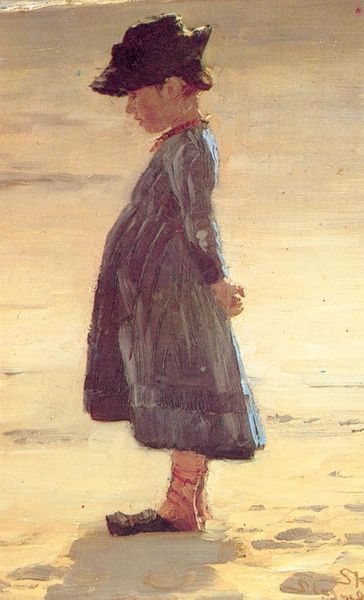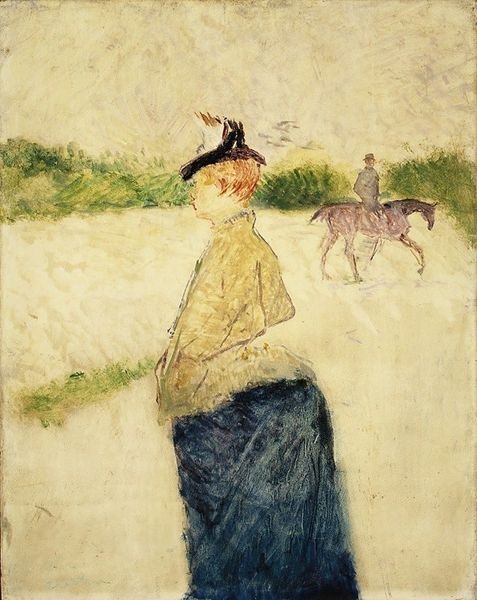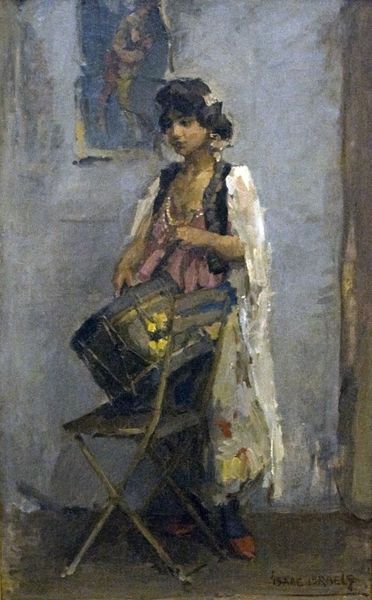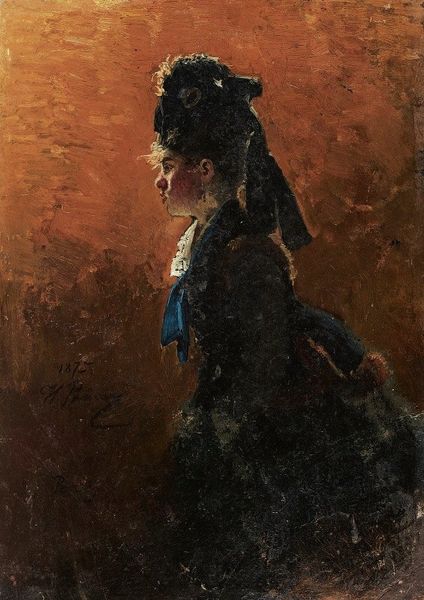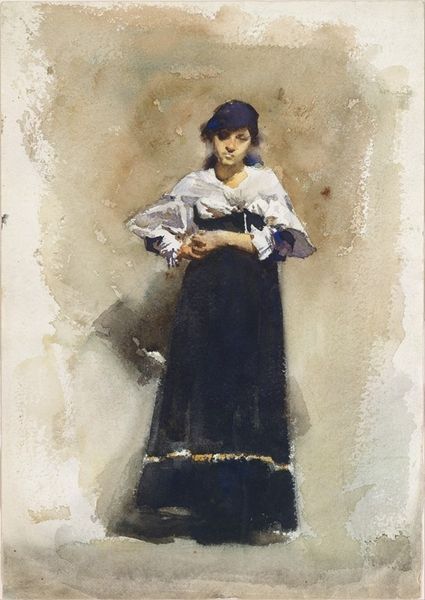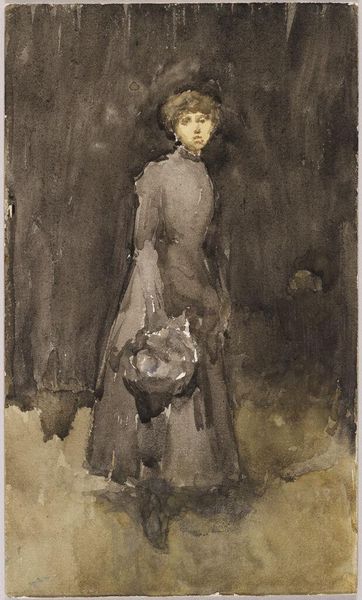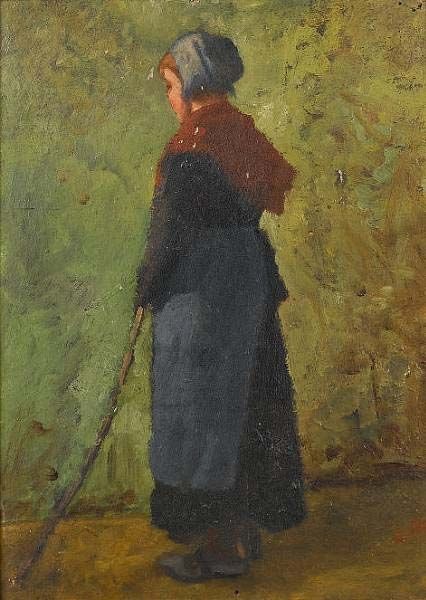
#
gouache
#
figurative
#
acrylic
#
possibly oil pastel
#
oil painting
#
acrylic on canvas
#
underpainting
#
painting painterly
#
watercolour illustration
#
watercolor
#
fine art portrait
Copyright: Public Domain: Artvee
Curator: Before us we have John Singer Sargent's "Breton Girl with a Basket, Sketch for ‘Oyster Gatherers of Cancale’," dating from 1877. Editor: It strikes me immediately as a study in transient light and shadow. The almost monochromatic palette emphasizes the form, but there’s also a prevailing sense of melancholy about it. Curator: Indeed. Sargent was fascinated with capturing fleeting moments. He uses broad, confident brushstrokes to define the girl's form, a visual technique emphasizing a palpable sense of movement. I am curious: do you notice the use of the negative space around her? Editor: The composition does feel unfinished, yet deliberately so. The emptiness surrounding the figure amplifies the girl’s isolation, maybe even a quiet resilience born of the demands of her labor. There is quite a stark contrast with Sargent’s later society portraits and more celebrated works. Curator: The image's power, in part, resides in its understated portrayal of working-class life in 19th-century France. Consider the context: Sargent’s painting coincides with increasing industrialization across Europe. These changing socioeconomic conditions elevated attention, visibility, and even anxiety toward the laboring class. Editor: It makes me wonder about the ethics of depicting the working class, if such glimpses did any more than provide visual interest. Sargent's portrayal of the Breton girl is both beautiful and somber. Her averted gaze and posture suggest introspection. And it appears this was not Sargent's intention. Curator: Do you mean the image serves to aestheticize the harshness of everyday struggles? Perhaps. Still, this painting provides viewers an entryway into imagining her life, even inviting critical examination of their relationship to this history. And on the compositional level, Sargent manages to convey all this while adhering to key compositional guidelines of the time. Editor: Well, even with my reservations about its socio-political implications, I concede there is also much aesthetic pleasure to be had from this quiet depiction. Curator: A sentiment I appreciate. Ultimately, Sargent's study urges us to look both outwardly at the world and inwardly at ourselves. Editor: I think I leave this observation with a greater interest to visit the final work for which this serves as a preparatory study, so as to place it better in its intended context.
Comments
No comments
Be the first to comment and join the conversation on the ultimate creative platform.
